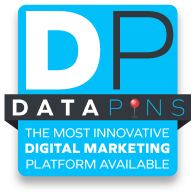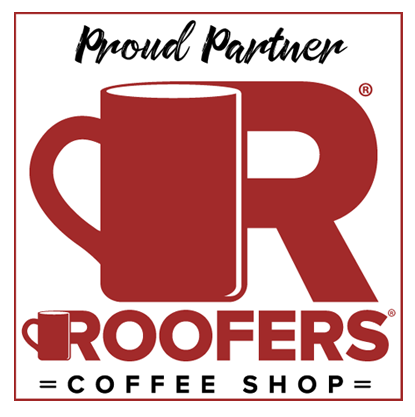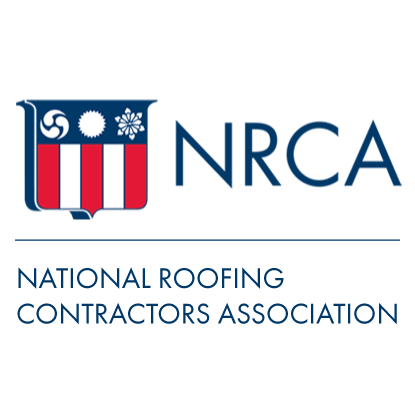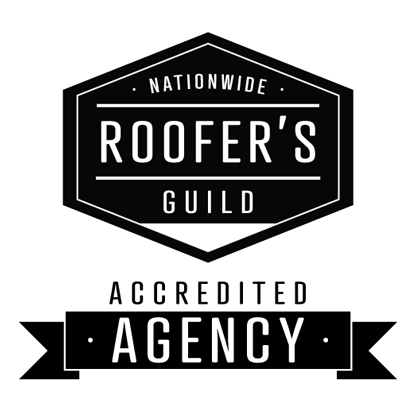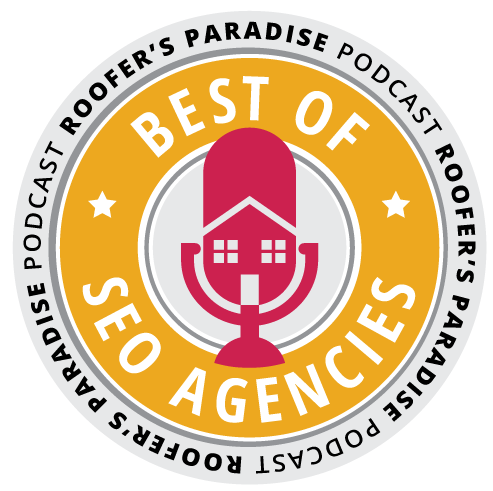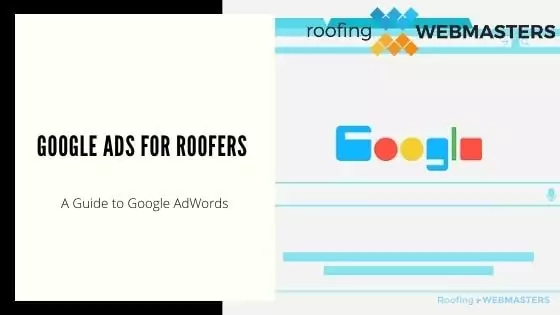
Table of Contents
My Experience With Google Ads for Roofers
I’m Nolen Walker, the founder, owner, and CEO of Roofing Webmasters. I’ve worked with thousands of roofing companies over the past thirteen years on digital marketing campaigns, many of which included Google Ads.
My decade-plus experience with Google Ads has given me unique insights into how roofers can best utilize them to grow their business, maximize revenue, and increase lead generation.
The guide below will outline specific strategies, examples, and recommendations based on my first-hand experience.
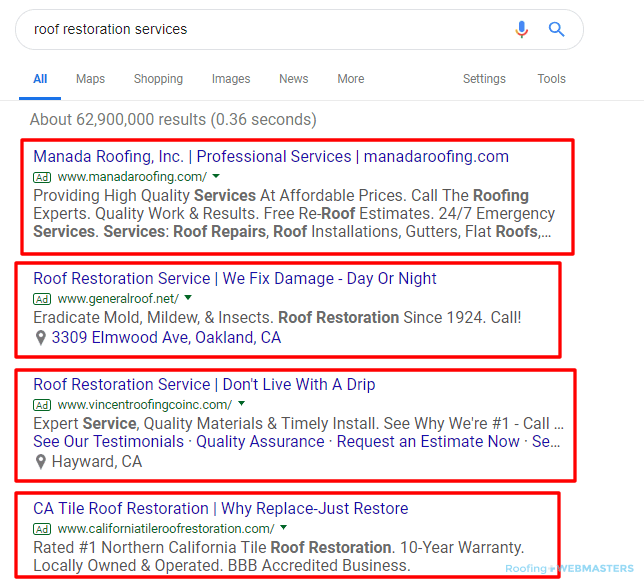
Key Takeaway
Google Ads allows local roofers to buy advertising space on Google search results above the traditional organic listings.
The Appeal of Google Ads for Roofing Companies
Google Ads, formerly known as Google Adwords, is Google’s online advertising platform. Roofers find the platform appealing because it delivers roofing leads quickly to their local company.
Roofing companies and other small businesses can buy advertising to appear on Google search results or elsewhere in their display network. The process is often referred to as “Google PPC.”
Compared to search engine optimization (SEO), which can take up to 6 months to deliver consistent leads, Google Ads provides the instant gratification that many businesses seek online.
PPC Advertising With Google Ads
Google Adwords is a form of PPC (Pay Per Click) advertising. It’s Google’s brand of PPC that allows your ad to show up on relevant SERPs.
Let’s say, for example, that you operate a roofing company in New Haven, CT.
Now, someone in the New Haven area hops on their computer and does a Google search for “roof repair in New Haven,” “roof repair near me,” or something similar.
With Google Adwords, an advertisement for your company could appear at the top of the results list, garnering a ton of clicks.
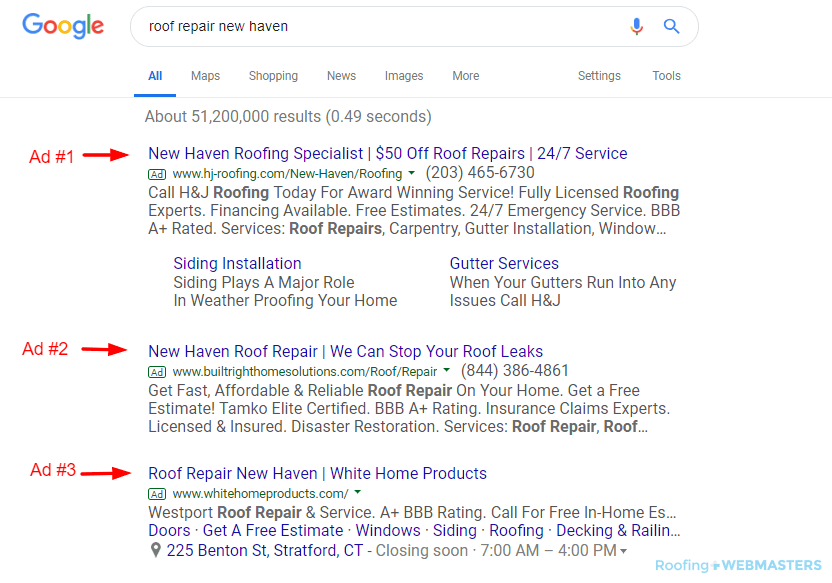
Instead of spending months trying to claw your way to the top of the search rankings, you can pay for an ad that will display near the top of the results page on relevant searches.
Paid vs. Organic Clicks for Roofing Companies
Clicks on paid ads convert at about a 1% higher rate than clicks on organic results. However, that statistic is highly misleading.
Organic SEO involves satisfying various user intents on a single website, which fosters more total clicks.
For instance, a roofing business website will attract the following types of queries:
- Transactional (i.e., roof repair services)
- Informational (i.e., signs of roof damage after a hail storm)
- Navigational (i.e., your company name + reviews)
Each of these queries represents a separate user intent. While your transactional pages may convert at a high rate, your informational and navigational pages may not.
As a result, the total conversion percentage is driven down compared to paid ads focusing exclusively on transactional queries and connecting landing pages designed to convert those specific users.
As a result, users clicking on that paid ad may convert at a 3.75% rate compared to a 2.75% rate from organic clicks.
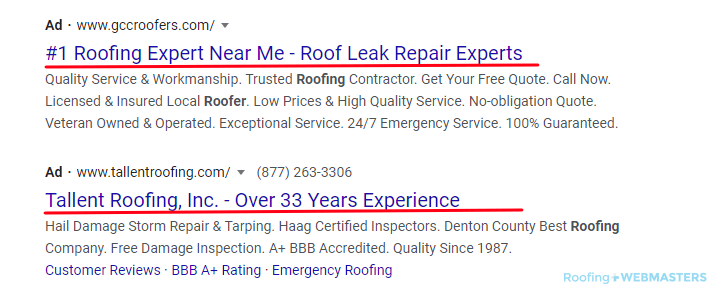
Clicks from paid ads occur faster but require more expense and produce lower ROI.
Maximizing Google Ads Performance
When you’re first starting, you will need all the exposure you can get. Organic SEO could take months, but with Google Ads, you can immediately reach the top of the search rankings and get noticed by your local market.
To maximize performance, focus on the following strategies:
Targeting
With Google Ads, you can ensure that the ads you pay for reach people who are most likely to need/want your services as a roofer.
You can target audiences by geographic location, age, and specific keywords and even ensure that your ad appears at a certain time of day.
When you come to the “Location” option of the setup process, you can enter a specific city name so that your ad shows up only for people in that city.
If you click the “Advanced Search” option, you can better target your ads based on postal code or region. You can also select a radius in miles for how far you want your ad displayed from your actual location.
Reporting
Google Ads reports include statistics on your ads’ performance. This can provide you with invaluable market insight, such as who clicks on your ads and takes action.
Most importantly, it provides the insights needed to continually improve your ads from targeting to creative and landing pages.
Search and Display Networks
You will also have the option to choose whether your ads will be shown on a Display Network or a Search Network.
The Search Network is a favorable option for new roofing companies because it ensures that your ad shows up on relevant searches on the actual Google page.
Display Network ads appear outside the actual Google search site on websites partnered with Google ads.
Keyword Selection
Selecting keywords is a critical aspect of the process. These search phrases will trigger the display of your ads, so you have to choose wisely. Think about your popular services and how people might search for them.
Meanwhile, avoid keywords that lack relevance to your services or project a low conversion rate. Google Ads expenses add up quickly, so invest only in clicks worth paying for.
Choosing Target Keyword Terms
Google Ads gives you multiple keyword selection options such as broad match, broad match modifier, phrase match, and exact match.
Broad match
Allows your ad to display on searches that are remotely related to your actual keyword. This allows you to reach more people, but the downside is that the ad might reach people who really aren’t interested in roofing services.
Broad Match Modifier
Works by placing a “+” before the keyword. Your ad will appear if a search contains the phrase after the plus sign.
Phrase Match
Your ad will show up only on searches that contain your phrase in the exact order in which you typed it.
For instance, if one of your phrase match phrases is “shingle repair Des Moines,” your ad will not appear for people who search “Des Moines shingle repair service.”
Exact Match
Your ad will only appear when someone does a search that contains your exact keywords as they are listed.
It is probably the best idea for local roofers to choose the broad match modifier for most keywords.
Landing Page Optimization for Google Ads
Landing pages make or break your entire Google Ads campaign. Failure to properly optimize a landing undermines your entire investment and virtually guarantees a negative ROI.
Conversely, a well-designed landing page can reduce your acquisition cost and outperform the average ROI for competing advertisements.
Here are some essential tips for crafting an effective landing page:
Page Relevance
Make the landing page correspond with the ad as much as possible.
For example, if your ad promotes your shingle replacement service, the landing page should not be about new roof installation but about shingle replacement.
Page Copy
Make sure the content on your landing page is well-written. About 350-400 words should do. The visual components of your landing page will make a difference.
The text itself is not as important as its presentation. Make sure to inject your copy into well-designed blocks that are easily read on mobile devices.
Calls to Action
Your landing page has to have an attention-grabbing heading and a call to action. Most visitors will read your call to action if they read your heading, so make sure it inspires the visitor to make a move.
As we noted with the ad copy, inserting your CTAs into appealing visual elements is crucial for conversions.
Next Steps with Google Ads for Roofing Companies
I’ve been running Roofing Webmasters for 13 years and have worked with over a thousand roofers on digital marketing campaigns, including Google Ads.
I have the data to prove that organic SEO outperforms PPC in terms of conversion rates, ROI, and total sales.
That said, Google Ads is a solid supplementation strategy for startup roofing companies in the early stages of SEO.
I’ve also witnessed established roofing companies use Google Ads selectively, in short spurts, to boost yearly revenue.
Based on this experience, I recommend roofing companies invest in a comprehensive digital marketing campaign that includes both SEO and Google Ads in 2024.

